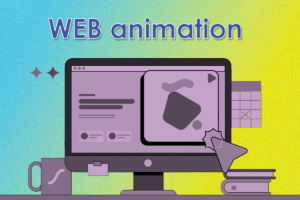Web Animation
Web Animation
Introduction
Animation is a powerful tool that adds life and interactivity to websites. By adding animation, websites become more engaging and visually appealing. This document provides an overview of web animation, its uses, and techniques.
Types of Animation
There are several types of animation that can be used in websites:
1. Keyframe Animation: Keyframe animation involves creating a sequence of keyframes that define the position and appearance of an object at specific moments in time. By tweening between the keyframes, the animation can be created.
2. CSS Transition: CSS transitions are a simple way to create fluid animations using CSS properties. By using transition timing functions and duration, animations can be created without any additional JavaScript.
3. SVG Animation: SVG (Scalable Vector Graphics) animations use JavaScript to animate elements within an SVG file. This allows for more complex animations and manipulation of SVG elements.
4. JavaScript Animation: JavaScript can be used to animate HTML elements directly. This allows for more customization and flexibility in creating animations.
Benefits of Web Animation
Web animation offers several benefits:
– Enhanced User Experience: Animations can help guide users through a website, drawing attention to important elements and providing feedback.
– Visual Appeal: Animations can help create a more visually appealing and engaging website, making it more memorable for visitors.
– Brand Awareness: Animations can help reinforce a company’s brand identity by using the same animations across multiple pages.
– Interactive Interfaces: Animations can be used to create interactive interfaces, such as drop-down menus or hover effects.
Techniques for Creating Web Animations
When creating web animations, there are several techniques to consider:
1. Easing: Easing is the timing function that determines how smoothly the animation transitions between keyframes. Different easing styles can be used to create different effects.
2. Timing: Timing is another important consideration for animations. The duration, delay, and keyframes all contribute to the overall timing of the animation.
3. Responsive Design: Web animations should be optimized for different screen sizes and devices to ensure optimal user experience.
4. Performance Optimization: Flashy animations can slow down a website’s performance. It’s important to optimize animations to minimize their impact on page load time.
Conclusion
Web animation is a powerful tool that adds excitement and interactivity to websites. By understanding different types of animation and using appropriate techniques, you can create engaging and visually captivating websites. Remember to consider user experience, performance, and responsive design when implementing animations.

